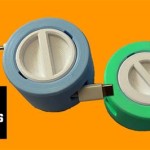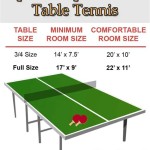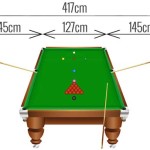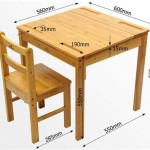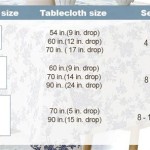Understanding the Size of a Professional Pool Table Pocket Square Fold
The game of pool, often referred to as billiards, relies on precision, strategy, and a standardized playing surface. One of the most critical aspects of this standardized surface is the pocket. The dimensions of these pockets, and subsequently, the effective opening created by what can be referred to as the "pocket square fold," are governed by specific regulations designed to ensure fair play at the professional level. These regulations are not arbitrary; they are meticulously crafted to balance the challenges of the game, preventing it from becoming either too easy or excessively difficult. Understanding the size and function of the pocket square fold is therefore essential for anyone interested in the mechanics and rules of professional pool.
While the term "pocket square fold" isn't official billiard terminology, we can interpret it as the implied angle and resulting effective opening created by the cut of the cloth and the resulting curvature or rounding of the pocket facings as the ball approaches the entry point. This "fold," in effect, influences how easily a ball will drop into the pocket. The tighter the fold, the more forgiving the pocket; the shallower the fold, the more precise the shot needs to be. The crucial aspect of determining a pocket’s difficulty is understanding how the pocket opening effectively narrows with the "pocket square fold’s" geometry as the ball approaches.
The most influential governing bodies for pool, such as the World Pool-Billiard Association (WPA) and various national federations, define precise pocket dimensions for sanctioned tournaments. These dimensions dictate the allowable range for the width of the pocket opening at various points, from the front to the back. It is through these dimensions that the effective "pocket square fold" created during pocket installation is controlled.
Regulation Pocket Dimensions and Their Significance
The WPA Equipment Specifications delineate specific measurements for pool table pockets. These dimensions are not single, fixed values but rather ranges that provide manufacturers with a degree of flexibility while still maintaining a consistent level of play. Understanding these ranges is vital for appreciating how the "pocket square fold," or the effective opening, is controlled. For example, the corner pocket opening must be between 4 ½ inches (11.43 cm) and 4 5/8 inches (11.75 cm). The side pocket opening, being slightly wider, must be between 5 inches (12.7 cm) and 5 1/8 inches (13.02 cm). These measurements are taken from rail nose to rail nose.
These dimensions are not simply about the width of the opening. The angles at which the rails meet the pocket openings are also critical. A sharper angle creates a more demanding shot, requiring greater accuracy. A gentler approach creates a more forgiving pocket. The "pocket square fold" arises from the specific curvature applied to the facing edge of the rail cushion as it meets the pocket opening. A well-defined curve, subtly shaping the approach to the pocket, can either enhance or diminish the difficulty of sinking a ball.
The depth of the pocket, measured from the nose of the cushion to the back of the pocket where the ball comes to rest, is less directly affiliated with the "pocket square fold" but still contributes to the overall playability. A shallow pocket might cause balls to rebound out, while an overly deep pocket can muffle the sound of the ball dropping, potentially affecting a player's perception of the shot.
The nose of the cushion is a key element. It's the point on the rail cushion that protrudes furthest into the playing surface and is the reference point for many pocket measurements. Ensuring this nose is correctly positioned and consistently shaped around all pockets is crucial for maintaining a fair and predictable playing field. Variations in the nose's shape significantly impact the effective "pocket square fold" and thus the overall pocket acceptance angle.
The Impact of Cloth and Cushion Material
The cloth covering the rails and the cushion material are integral to the performance of the pockets. The cloth, typically a tightly woven woolen fabric, affects the ball's speed and trajectory as it approaches the pocket. A worn or loose cloth can cause the ball to deviate from its intended path, making shots more unpredictable. The quality of the cloth and how well it is maintained directly impacts the perceived size of the pocket opening.
The cushion material, usually made of rubber or a synthetic compound, provides the rebound effect that is fundamental to the game. The durometer (hardness) of the cushion affects how the ball responds upon impact. Softer cushions tend to absorb more energy, resulting in a slower rebound, while harder cushions produce a faster and more pronounced bounce. The consistency of the cushion material around the entire table is paramount; any variations can lead to inconsistent gameplay.
The way the cloth is attached to the cushion also plays a role. If the cloth is too tightly stretched, it can distort the shape of the cushion, altering the angle at which the ball contacts the rail. If the cloth is too loose, it can bunch up around the pocket opening, creating an uneven surface and potentially affecting the ball's entry. The "pocket square fold," as influenced by the cloth, is thus a critical detail for maintaining consistent play.
Furthermore, the installation of the cushions, the way they are glued or secured to the rail body, has a long-term influence. As the glue degrades, the cushion can shift thus subtly changing the pocket opening. This change may not be immediately noticeable, but over time, it can affect the playability of the table. Regular maintenance and inspection are vital to mitigate these changes.
Measuring and Maintaining Pocket Accuracy
Ensuring that pool table pockets adhere to the regulated dimensions requires precise measuring tools and techniques. Specialized pocket templates or gauges are commonly used to verify the width of the pocket openings at various points. These tools allow for quick and accurate assessments of compliance with the WPA standards.
Leveling the table is also crucial. An unlevel table can cause balls to roll unevenly, making shots near the pockets more challenging. A precision level is essential for adjusting the table's feet until the playing surface is perfectly horizontal.
Regular maintenance, including cleaning the cloth, checking for wear and tear on the cushions, and verifying pocket dimensions, is essential for preserving the integrity of the playing surface. Over time, the cushions can deteriorate, affecting their rebound properties. The cloth can become worn or stained, impacting the ball's speed and trajectory. Addressing these issues promptly prevents significant deviations from the intended playing characteristics.
Professional table mechanics possess the specialized knowledge and tools necessary to install and maintain pool tables to meet these stringent standards. Their expertise is invaluable in ensuring fair and consistent play, particularly in tournament settings. They can adjust cushion facings to subtly improve or constrict the "pocket square fold," tuning the difficulty of a table. Their role is a critical component in the world of professional billiards.
In conclusion, the dimensions of pool table pockets, and particularly the subtleties dictated by what we can term the "pocket square fold," are carefully regulated to ensure fair play at the professional level. These regulations encompass not only the width of the pocket openings but also the angles at which the rails meet the pockets. Careful attention to these details, along with proper maintenance and the expertise of skilled table mechanics, is vital for maintaining the integrity and consistent playability of professional pool tables.

Barrington Billiards 5 Urban Drop Pocket Pool Table With Accessories Gray

Barrington Billiards 5 Urban Drop Pocket Pool Table With Accessories Gray

Soozier Portable Folding Billiards Table Game Pool For Kids S With Cues Ball Rack Brush And Steel Frame Mini Top Billiard Board Aosom

Barrington Billiards 5 Urban Drop Pocket Pool Table With Accessories Gray

Buy China Whole Home Use Mini Billiard Pool Table 5ft And 6ft For 55 Globalsources Com

High Quality 72 Standing Up Pool Table Foldable Snooker Stand Billiards And Billiard Made In China Com

Soozier Indoor Standard Pool Table A70 056 At Com

Sudzendf 3 In 1 Green Portable Pool Table With Billiard Balls Brush Triangle Rack

Mg Metric Geometry Does There Exist A Shot In Ideal Pocket Billiards Mathoverflow

Small Pool Table 12 Steps Instructables

